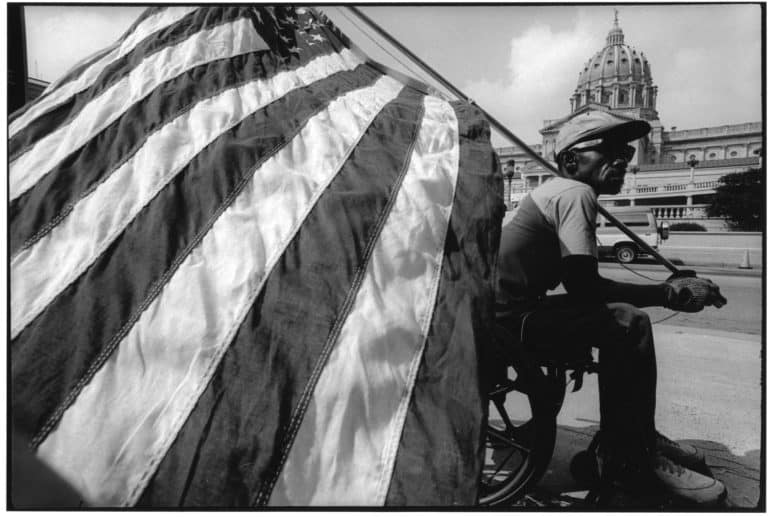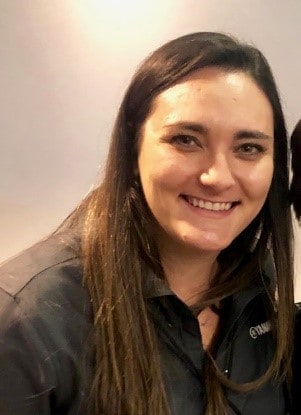As We Celebrate 31 years of the ADA There's Still More Advocacy and Work to be Done
The ADA was the world’s first comprehensive declaration of equality for people with disabilities. However, in the wake of COVID-19, the evidence shows there is still work to be done.
THE VBP Blog

Steve Roberts Protests with ADAPT in Harrisburg, PA
PHOTO CREDIT: Harvey Finkle
This week, we are celebrating the 31st Anniversary of the Americans with Disabilities Act. 31 years ago, on July 26, 1990, President George H.W. Bush signed the Americans with Disabilities Act into law. It was the world’s first comprehensive declaration of equality for those with disabilities.
In five titles, the Americans with Disabilities Act covers employment rights, rights of access to public accommodations and transportation services, and equivalent telecommunications services for the disabled. Overall, the law prohibits discrimination against people with disabilities, while guaranteeing them the same opportunities as everyone else.
Currently, 61 million American adults, or 1 in 4, have at least one type of disability that impacts major life activities. This highlights the continued importance of the Americans with Disabilities Act as it impacts a large majority of the American population.
Key Players in Passing of the Americans with Disabilities Act
The history of the Americans with Disabilities Act (ADA) did not start at the White House signing ceremony in 1990, nor did it start in 1988 when the first ADA was introduced in Congress.
It began long before in towns and cities across the country as individuals with disabilities began to challenge the societal barriers that excluded them from participating fully in the community. It began with the establishment of the independent living movement and with the establishment of local groups advocating for those with disabilities.
Looking back at history, it is clear that the Americans with Disabilities Act cannot be attributed to any one person or even a few people. The ADA was actually brought about by the thousands of people that participated in the disability rights movement starting in the 1960s.
It was the masses challenging laws, lobbying Congress, and marching on Washington that began the shifting view that eventually led to the signing of the Americans with Disabilities Act.
Despite Successes, COVID-19 Shows There Is Still Work to Be Done
While the Americans with Disabilities Act has done great things for the community, it is important to continually strive for health equity. In the wake of COVID-19, it became apparent that people with disabilities were disproportionately impacted by COVID-19.
This was the result of three factors; increased risk of poor outcomes from the disease, reduced access to health care and rehabilitation, and adverse social impacts of efforts to mitigate the pandemic.
Those with disabilities faced unique challenges, including the inability to wear masks due to health risks and lack of access to COVID-19 testing due to being housebound or unable to travel independently. In addition, many blind and visually impaired individuals were unable to access telehealth tools that were not accessible. Many also fell victim to health care visitor policies that excluded support persons or the inability to receive home care services due to social distancing.
In the wake of the pandemic, it is clear that our healthcare system is still not equitable. In order to empower and care for individuals with disabilities, we need to make the healthcare system more accessible and inclusive.
This is especially true as we shift to more telehealth. Systems need to be accessible for visually and hearing-impaired individuals. There also needs to be procedures and backup plans in place to care for homebound individuals. Adopting an inclusive, whole-person care system that creates solutions tailor-made to specific individuals’ needs is also essential.
While we hope to avoid another global pandemic, we must take lessons learned from COVID-19 to develop an equitable healthcare system for individuals with disabilities.
Advocate’s Perspective
There has always been health inequities for people with disabilities. COVID exposed how those with inadequate insurance are marginalized. It was obviously how systems were not in place for those who need high levels of care. Value-based payment models continue to bring optimism for how these consumers will be treated in the future.
Onward!
Share This Blog!
Get even more insights on Linkedin & Twitter

About the Author
Fady Sahhar brings over 30 years of senior management experience working with major multinational companies including Sara Lee, Mobil Oil, Tenneco Packaging, Pactiv, Progressive Insurance, Transitions Optical, PPG Industries and Essilor (France).
His corporate responsibilities included new product development, strategic planning, marketing management, and global sales. He has developed a number of global communications networks, launched products in over 45 countries, and managed a number of branded patented products.

About the Co-Author
Mandy Sahhar provides experience in digital marketing, event management, and business development. Her background has allowed her to get in on the ground floor of marketing efforts including website design, content marketing, and trade show planning. Through her modern approach, she focuses on bringing businesses into the new digital age of marketing through unique approaches and focused content creation. With a passion for communications, she can bring a fresh perspective to an ever-changing industry. Mandy has an MBA with a marketing concentration from Canisius College.